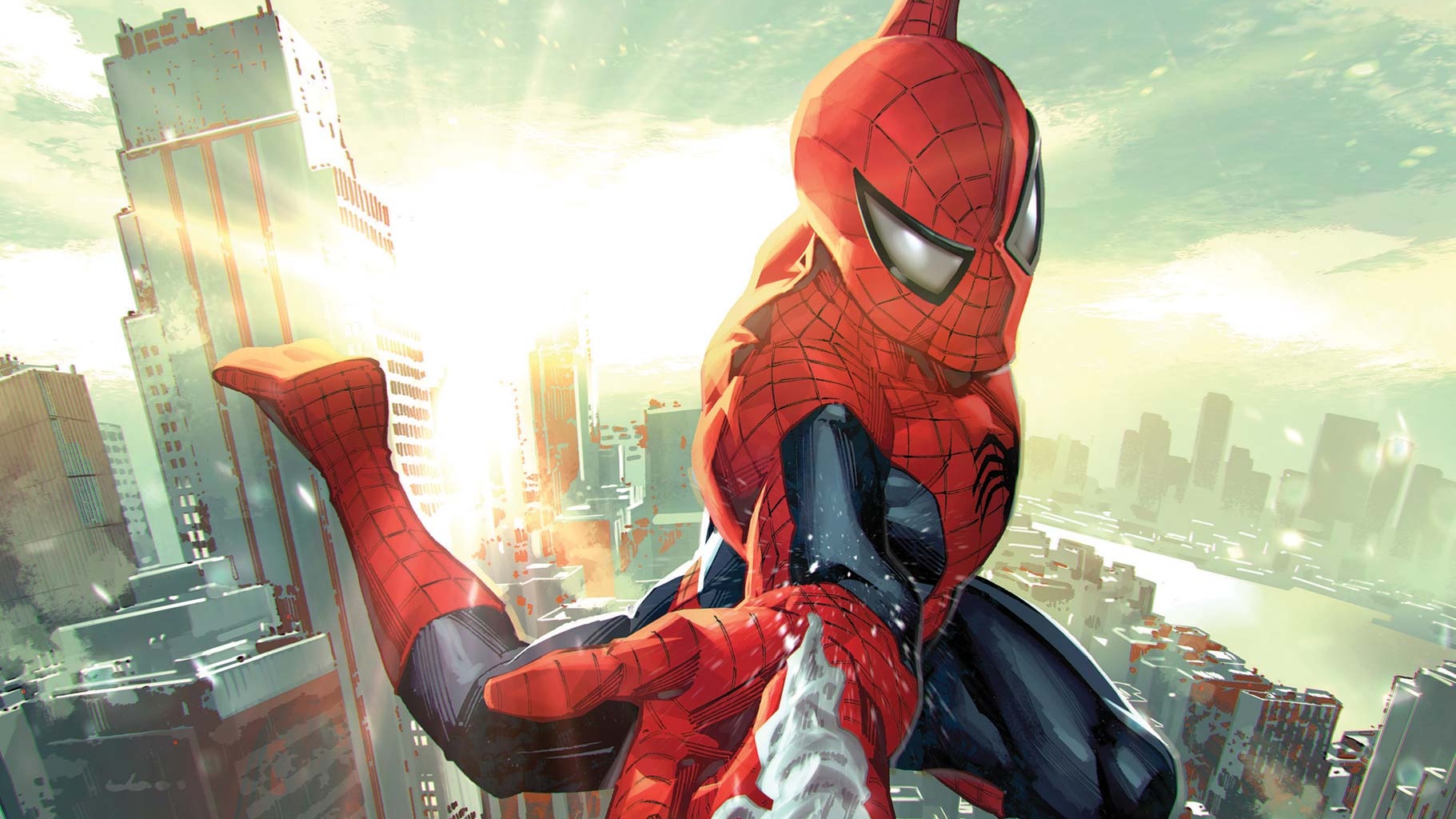
This Spider-Man article contains spoilers.
Every comic book fan knows about the night that Gwen Stacy died. The two-part story from 1973’s Amazing Spider-Man #121–122 stands as a watershed moment in comics, not only upping the stakes of Spider-Man’s inability to balance his personal and heroic lives, but also giving permission for superhero comics to push the envelope in a way that had not been done since the pre-Comics Code days.
For most of Spider-Man’s history, Gwen fell into the same category as Thomas and Martha Wayne or (pre-Superboy punch) Jason Todd. She existed only to die, to give tragic backstory to our hero. Decades before Major Force killed Alex DeWitt in Green Lantern #54, Gwen was the patron saint of fridged girlfriends. Her death hangs over the entire story of Spider-Man, even when played by the sparkling Emma Stone in The Amazing Spider-Man movies. The writers know we expect Gwen to die and play on that tension.
And then things started to change. The original Ultimate Spider-Man series by Brian Michael Bendis and Mark Bagley plays against Gwen’s girl next door image by reimagining her as a punk kid rebelling against her cop father. However, Gwen does die almost 50 issues later in Ultimate Spider-Man #62, getting killed by Carnage. However, symbiote nonsense allows Gwen to return as a clone later, and she continues to serve as a supporting character after Peter’s death and even in Miles Morales’ early appearances.
That connection between Miles and Gwen proved to be fortuitous, even though Bendis doesn’t really explore it in the late issues of Ultimate Spider-Man. Instead, Gwen reaches her full potential during the 2014 Spider-Verse event written by Dan Slott. Like the hit movies, the Spider-Verse storyline finds Peter and Miles (then still relegated to the Ultimate universe) teaming with a host of Spider-variants. The pleasure of the story comes from seeing all of the various takes on Spider-Man, some of them nostalgic oddities (such as the Spider-Man from the daily newspaper strip or the Japanese Spider-Man with a giant mech), while others just provided variations on the central theme.
So when 2014’s Edge of Spider-Verse #2, written by Jason Latour and drawn by Robbi Rodriguez, introduces the Gwen Stacy as the Spider-Woman of Earth-65, fans were ready for her to become more than the girl who died. Latour and Rodriguez inverts the script on the classic Gwen story, making her a Spider-Hero who failed to save her beloved Peter Parker, the Lizard in that universe. This backstory is later echoed in the Spider-Man: Into the Spider-Verse and Across the Spider-Verse movies, in which Spider-Gwen (or Spider-Woman or Ghost-Spider, if you prefer) isn’t just a standard haunted hero. In other words, the comics and most recent movies have really worked to redefine Gwen Stacy into a fully-developed character.
Which makes her introduction in the new Ultimate Universe all the more chilling. Written by Jonathan Hickman and drawn by David Messina, Ultimate Spider-Man #4 finds Peter and Mary Jane Parker on a dinner date with their new friend Harry Osborne and his wife…Gwen Stacy. As with everything else in Hickman’s Ultimate Spider-Man run, the story provides slight twists to familiar dynamics. In the mainstream comics, Harry dated Mary Jane and married Liz Allen, both Peter’s love interests at one time. But he and Gwen never got together in the main canon.
But more than a mere member of a shuffled couple, the new Ultimate Gwen also breaks from tradition with her attitude. Yes, the original punker Gwen had an attitude that differed from the milquetoast good girl of the mainline comics, but she had no more depth than any other kid rebelling against an authoritarian parent. The new Ultimate Gwen has the aggression of a high-powered business professional, making her more than a match for the swaggering Harry. She’s not terribly likable in this depiction, in a way that feels compelling and rich.
She’s particularly compelling to Mary Jane. After their dinner, Peter and MJ agree that Gwen and Harry were a bit overwhelming, but it’s clear that MJ, a model-turned-advertising executive, is taken by Gwen’s autonomy. Since having kids, she and Peter haven’t had quite the same freedom that they once enjoyed, and she sees in Gwen a life she could have had. In other words, Gwen inspires MJ — no superpowers required.
And yet, Hickman still plays with reader’s expectations. While Gwen and MJ go off to the restroom, Peter and Harry talk shop about having secret super-identities. In this reality, the two have become friends as adults after meeting in their Spider-Man/Green Goblin guises. So Peter is shocked to learn that Harry has told Gwen about his double-life, something he cannot yet do with MJ.
“I have to protect them, don’t I?” asks an exasperated Peter, already torn by the few weeks he’s been Spider-Man. Harry waits a beat, taking into consideration Peter’s question, and then answers: “You seriously think you can live this life and insulate the people you love from the consequences?”
Messina draws the conversation as a nine-panel grid across the page, with each speaker’s face filling the panel. He draws Harry looking down as he poses his question to Peter, his face half obscured by shadow and the edge of the panel. There’s a threat implicit in the panel, and while it’s not clear who is being threatened, this seems to be a bit of foreshadowing all the same. Harry might be about to learn a lesson in protecting the people you love. And that lesson may cost Gwen her life.
I hope that’s not the case. Only four issues in, Hickman’s Ultimate Spider-Man has been a celebration of everything that makes the character great. Although Gwen has done enough to inspire people in death, it’s time to continue inspiring people in life.
Ultimate Spider-Man #4 is out now. Issue #5 hits shelves on May 29.
The post Marvel Just Made Drastic Changes to a Major Spider-Man Character appeared first on Den of Geek.




